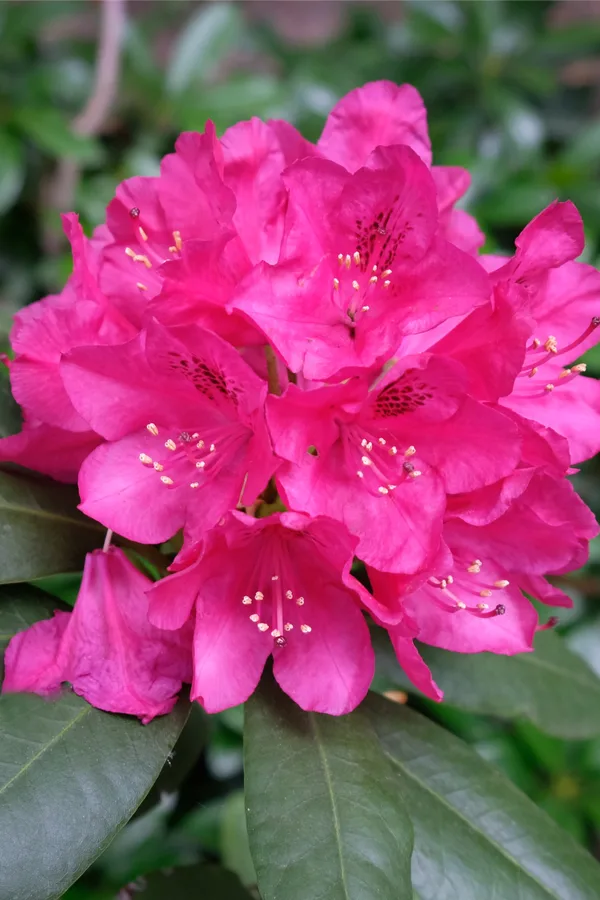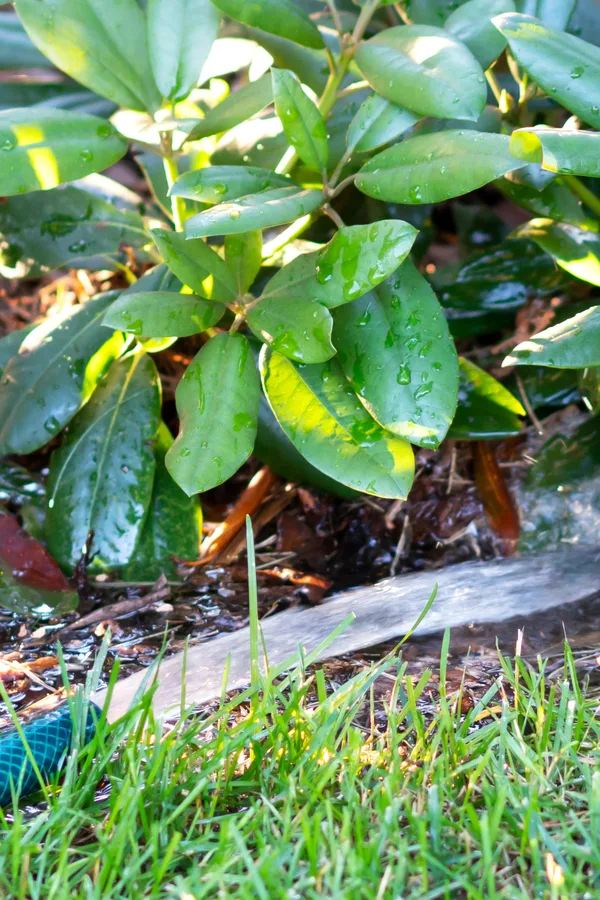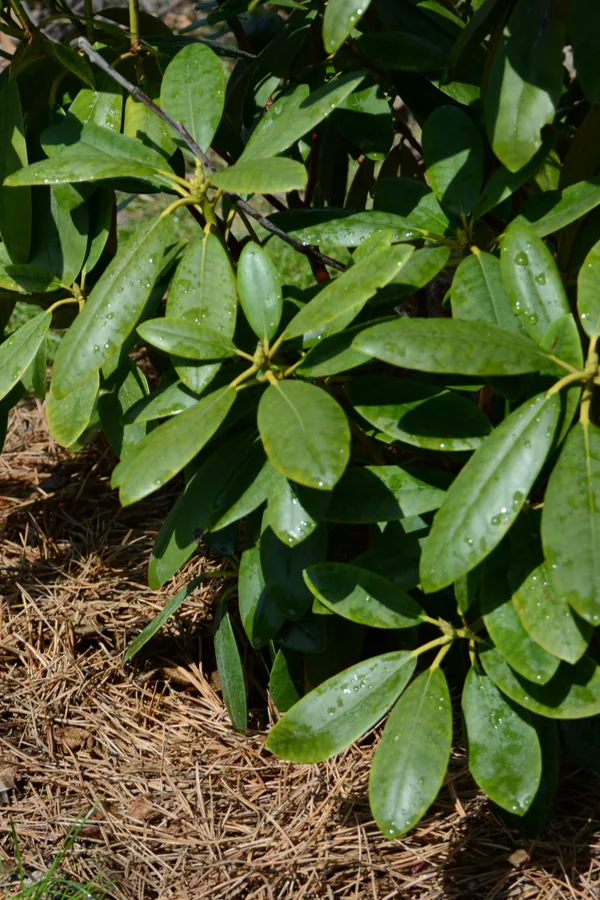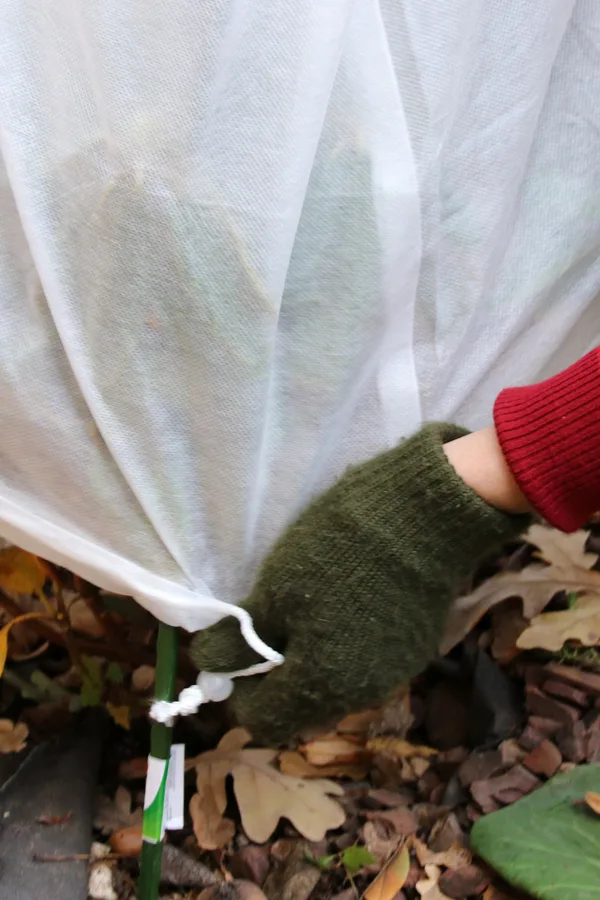Today’s article is about how to prepare your rhododendrons for winter. Although rhododendrons tend to be quite hardy, a little bit of autumn care can really help them to bloom better than ever next year.
Rhododendrons provide amazing beauty and elegance to the landscape. And not just when in bloom, but in late summer, fall and winter too.
Although some rhododendrons are deciduous and drop their leaves in the cold winter months, many varieties keep their greenery all winter long to provide interest and color through the stark and dreary months. And when spring arrives, can they ever explode with blooms and color!

But how you prepare your rhododendrons for winter’s fury can play a big part in next year’s health and vitality, as well as how many of those exploding blooms unfurl. Here is a look at what to do this fall to help your rhododendrons through the long winter months.
How To Prepare Your Rhododendrons For Winter
The Importance Of Fall Watering
More than anything else, rhododendrons suffer from a lack of moisture over the winter months. Winter winds whip branches and foliage and dry them out quickly. And as the ground freezes over, it makes it hard for moisture to make it down to the roots.
One of the best ways to help combat these two issues is making sure your rhododendron receives plenty of hydration in the fall. Water bushes regularly in the fall until the ground freezes over, especially if rains are inconsistent.

A good soaking once a week is more than enough to provide the necessary water to the roots. Not only does it help to hydrate the plant’s roots, but it also allows the plant to take in nutrients more easily.
When watering, place the hose at the root zone of the plant near the soil. Avoid spraying the leaves or using a sprinkler when watering. Not only is much of the water lost through evaporation when spraying, the wet leaves can also make it easy for disease to develop in the cool fall temperatures.
Fall Mulching – How To Prepare Your Rhododendrons For Winter
Nothing can beat a good layer of mulch to help conserve moisture, control weeds, and help protect your rhododendron through the long winter months.
Wood chips, straw, shredded leaves or pine needles are all good for mulching. Pine needles, if available, are one of the best choices of all. As an added benefit, as they break down, they can help to create a more acidic soil, which rhododendrons prefer.
Mulch the bottom of your shrub to include the entire root zone of the plant. The best way to ensure this is to mulch out to the edge of the leaf canopy. A three to five inch thick layer of mulch should be more than enough to do the trick.

One final note on mulching, do not pile an excessive amount of mulch right up around the main base or trunk. In fact, leave your mulch a few inches back from this area.
If piled too thick around the base, it can actually encourage rot if the soil receives too much moisture. By backing the mulch off a few inches from the base, it can allow the air to flow through to the main trunk area.
Additional Fall Care – How To Prepare Rhododendrons For Winter
Beyond fall watering and mulch, rhododendrons can benefit greatly from a bit of wind protection through the winter. Especially if they are located in a part of the landscape that has no natural wind blocks in place.

For bushes located in vulnerable locations, a burlap or mesh plant cover works best. Both of these allow air, water and light through, but keep winds from whipping the leaves, which can both dry out the plant and damage the foliage.
Pruning – How To Prepare Rhododendrons
In general, when it comes to rhododendrons, pruning should be centered more around general shaping and maintenance, and not around cutting the bush back on a regular basis.
Rhododendrons simply do not require regular or massive pruning to continue flowering. But with that said, there are certain times that are better than others for shaping and maintaining the look of your rhododendron – and fall is not one of them.
Flowers should be cut back as the plant ends it blooming period. Beyond that, all pruning after that should cease for the year. Unfortunately, late summer and fall pruning creates tender late season growth that is susceptible to winter freeze and damage.

Instead, prune in late winter or early spring, when the bush is dormant, or just beginning to come out of dormancy. In the case of rhododendrons that have have become overly large, heavy pruning will not kill the plant, however, it may take a full season to regrow and regain its strength for blooming.
If you are going to undertake a heavy prune, early spring or just before the bush begins to leaf out coming out of winter is the best time.
Fertilizing – How To Prepare Rhododendrons For Winter
Although it may seem like a good idea, rhododendrons should not be fertilized in the fall. Fertilizing right before the winter months can promote weak, tender, late season growth. See: Why Not To Fertilize Perennials In The Fall
Unfortunately, that late growth is highly susceptible to damage from hard frosts or a freeze. In much the same fashion, late fertilizing can also encourage root growth that is just as vulnerable.
Instead, fertilizing should be applied in the early spring, just as the bush begins to form its buds. Use a high quality fertilizer that is geared for acidic loving plants. Fertilizers that are specifically labeled for use with azaleas, rhododendrons and camellias are the best choice. Product Link : Dr. Earths Acid Fertilizer
Here is to getting your rhododendron ready for winter. And of course, to a great set of blooms next spring and early summer!
Follow Our Facebook Page For Great Gardening Tips And Advice! This Is My Garden Facebook Page
This Is My Garden is a garden website created by gardeners, for gardeners. Jim and Mary Competti have been writing gardening, DIY and recipe articles and books and speaking for over 15 years from their 46 acre Ohio farm. They publish three articles every week, 52 weeks a year. Sign up today to follow via email, or follow along!

